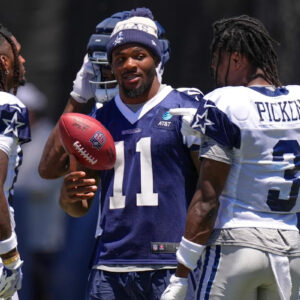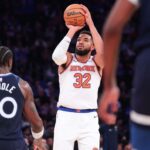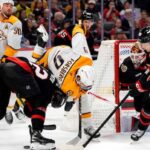The Milwaukee Brewers’ unforgettable journey has concluded. Despite achieving a franchise milestone with 97 regular-season victories, the Brewers were abruptly ousted by the Los Angeles Dodgers in the NLCS. Over those four contests, Milwaukee managed only four tallies and maintained a lead for a mere fraction of an inning. While limiting the Dodgers to 15 runs across the series was commendable, the offensive struggles proved insurmountable, sending the Brewers home.
Milwaukee’s impressive 97 wins topped the league, representing the lowest total for MLB’s leading team since the Boston Red Sox and St. Louis Cardinals shared the honors with 97 wins each back in 2013. To find a season where the league leader secured fewer than 97 wins, one must revisit 2007 when both Cleveland and the Red Sox concluded with 96 triumphs. The Brewers’ season can be divided into three distinct phases:
|
Opening 53 games |
25-28 (.472) |
minus-6 |
|
Subsequent 69 games |
53-16 (.768) |
plus-168 |
|
Closing 40 games |
19-21 (.475) |
plus-19 |
The Brewers became the first team to secure 53 victories within a 69-game span since the Dodgers achieved this feat from July 5 to Sept. 20, 2022. Milwaukee experienced some turbulence towards the end, although they boasted the league’s best record and a nine-game cushion in the NL Central after 122 games, suggesting they might have eased off the accelerator. This seemed evident given the apparent load management implemented during September.
Milwaukee possesses the fifth-highest winning percentage in MLB since 2018, an extraordinary accomplishment considering their market size. However, the Brewers’ postseason record during this period stands at a mere 11-20. Essentially, the Brewers continue to face postseason setbacks due to encountering teams operating similarly but with greater financial resources. This presents a formidable challenge, one they will endeavor to overcome again in 2026. Below are three critical questions confronting the Brewers this offseason.
What’s the plan for Peralta (and Woodruff)?
One thing is certain: Milwaukee will activate their favorable $8 million club option for 2026. The future of ace Freddy Peralta beyond that point remains somewhat uncertain. Given their recent pattern of trading premier players a year before free agency (Corbin Burnes, Josh Hader, Devin Williams, and others), and with Peralta, a top-tier starter for the past five years, now in that position, speculation abounds. He is poised to enter free agency for the first time after the upcoming season.
Notably, Peralta reportedly initiated discussions with the Brewers regarding a contract extension, but no agreement materialized. Was this due to differing financial expectations or the team’s reluctance to commit to Peralta during his anticipated decline phase? I suspect the former. I believe the Brewers would ideally keep Peralta in Milwaukee indefinitely, but as a team with limited resources, they must manage their finances prudently.
Milwaukee’s approach involves trading their star players a year before they hit free agency in exchange for promising young talents, ensuring the team’s continued success. There’s no reason to believe Peralta will be an exception. His $8 million salary represents exceptional value, as he would command three times that amount on the open market. The one-year term is likely to confine Peralta’s trade market to contenders, but numerous teams will undoubtedly express interest if the Brewers decide to make him available.
The case of Brandon Woodruff is also noteworthy. Milwaukee’s longest-tenured player returned from shoulder surgery this season, making 12 starts with a 3.20 ERA before a lat strain prematurely ended his season in September. His contract includes a $20 million mutual option with a $10 million buyout. Mutual options often lack significance, serving primarily to shift funds to the following year’s payroll via a buyout, rather than fostering continued collaboration between team and player.
In Woodruff’s instance, there is a possibility that both sides may exercise their respective ends of the mutual option. The buyout equates to a $10 million decision for Woodruff. Can he secure that amount as a free agent? Perhaps, although a pre-signing physical a year after major shoulder surgery and shortly after a lat strain presents inherent risks. The Brewers are obligated to pay Woodruff $10 million regardless. Retaining him for another $10 million would be a favorable outcome for them.
The Brewers employed an opener four times in nine postseason games. While this strategy isn’t inherently detrimental—Milwaukee’s offensive struggles, not pitching woes, led to their NLCS defeat—it suggests a lack of innings and trustworthy starters capable of navigating the lineup three times. Here’s a potential 2026 rotation depth chart, assuming Peralta and Woodruff are absent:
- RHP Jacob Misiorowski
- RHP Quinn Priester
- RHP Chad Patrick
- LHP Robert Gasser
- RHP Tobias Myers
- RHP Logan Henderson (elbow inflammation sidelined him in August)
- RHP Carlos Rodriguez
- RHP Coleman Crow (flexor strain ended his season in July)
Lefty DL Hall never pitched more than 3 ⅔ innings or threw over 56 pitches in a game this season. He’s suffered multiple injuries over the past two years (lat, knee, oblique), potentially signaling the end of his tenure as a starter. If not, that would be a welcome addition. We could slot Hall into that depth chart somewhere. Otherwise, the team has solid rotation depth with upside (particularly Misiorowski), but mostly consisting of “guys” rather than “capital-G Guys.” These are players capable of logging innings across 162 games, but perhaps not ideal for October starts.
Despite their overall success this season, the Brewers still required 24 starts from Jose Quintana, along with contributions from Tyler Alexander, Aaron Civale, Nestor Cortes, Elvin Rodriguez, and others. Trading Peralta remains a distinct possibility, which would remove the team’s premier starter and most dependable source of innings. Even if Woodruff returns, there is still a need to bolster the rotation, ideally with a Quintana-esque player who can eat up innings and aid the team in reaching the regular-season finish line.
How can they inject more power into the lineup?
Collectively, we tend to overemphasize the significance of the postseason, myself included. We often draw too many conclusions from short 3-7 game series. Postseason matchups pit good teams against other good teams, resulting in inevitable losses. These losses can sometimes be decisive, as was the case for the Brewers in the NLCS. Sometimes you simply get outplayed. Not every postseason defeat arises from exploited weaknesses or a lack of intangible qualities. Sometimes you just lose.
In Milwaukee’s situation, the team’s inability to score runs during the NLCS was undeniable. This was especially evident considering they hit only 166 home runs during the regular season, ranking ninth-lowest in MLB and second-lowest among postseason teams (the San Diego Padres hit 152). While the Dodgers’ pitching undoubtedly played a role, the Brewers’ struggles against top-tier pitching were not entirely surprising, given their league-low rankings in various batted ball metrics.
|
Average exit velocity |
88.6 mph |
28th |
89.4 mph |
|
Barrel rate (what’s this?) |
6.7% |
29th |
8.6% |
|
Hard-hit rate |
39.2% |
25th |
40.9% |
The Brewers amassed 806 runs this year, placing them third in MLB behind the New York Yankees (849) and Dodgers (825). Their low-power offense proved effective, largely due to their exceptional performance with runners in scoring position. However, power and home runs remain crucial elements. Overcoming ace-caliber pitchers or dominant bullpens solely through hits and walks is a challenge. Consider the league-wide statistics since the implementation of the 12-team postseason format in 2022:
|
Regular season |
4.45 |
1.16 |
|
Postseason |
4.05 |
1.21 |
Run scoring declines while home runs increase during the postseason. The Dodgers, who hit the second-most home runs during the regular season, are competing in the World Series against either the Seattle Mariners (third-most homers) or the Toronto Blue Jays (11th-most). The 2024 World Series featured two of the top three teams in home runs. The team with the third-most home runs won the 2023 World Series. The 2022 World Series showcased two of the top six teams in home runs. This pattern continues.
While I acknowledge that the Brewers employ a style of play that has yielded (significant) success, I believe it is fair to suggest that incorporating more power would be beneficial. Achieving this goal is attainable, though it will require creativity due to payroll limitations that preclude them from winning free-agent bidding wars for players like Kyle Schwarber. A full season of Andrew Vaughn, a healthy finger for William Contreras, and continued development from Jackson Chourio will contribute. However, there remains room to add more thump around them.
Milwaukee’s top eight and 12 of their top 13 players in plate appearances this season are under contract or team control in 2026. They have the opportunity to field a largely unchanged offense next season, a favorable prospect given this year’s success. This implies that any efforts to add power will necessitate difficult decisions, potentially involving trades or reduced playing time for certain players. Despite its appearance in the NLCS, the lack of power is not a fatal flaw, but rather an area that can be improved.
How do they clear the final hurdle?
In some respects, the Brewers overcame a hurdle this year. Their NLDS victory over the rival Chicago Cubs marked their first postseason series win since 2018. However, five postseason appearances in six years from 2019-24 have resulted in five swift exits. That isn’t the barrier I’m referencing here. Given the Brewers’ consistent success over the past few years, their focus should shift towards contending for a World Series title, particularly given their never having won one. Regular-season achievements hold limited weight and can become monotonous when followed by repeated postseason defeats.
The answer to the question of “how do they clear the final hurdle?” could be as simple as maintaining their current approach and hoping for favorable circumstances in future seasons. This response may seem unsatisfactory, but it may be the correct one. The Brewers are demonstrably doing many things effectively. They consistently compete each season despite operating with limited payrolls, a feat not easily accomplished. There is potential to add more power and perhaps bolster their pitching depth, a need shared by most teams. The Brewers are approximately 95% of the way towards securing a World Series title. Identifying and addressing the remaining 5% presents the greatest challenge, and success may sometimes be beyond their control.











